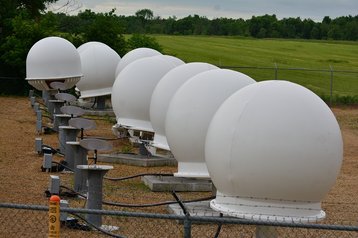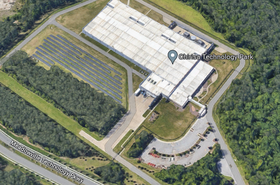SpaceX’s Starlink unit has withdrawn plans to build two of three proposed satellite ground stations in France.
The company had proposed to build up to three ground stations across the country; one each in Gravelines (North), in Saint-Senier-de-Beuvron (Manche), and Villenave-d'Ornon (Gironde)
The company aimed to install nine 2.86m antennas over a 400 sqm location in Manche. However, The Regulatory Authority for Electronic Communications, Posts, and Press Distribution (Arcep) this month confirmed the company has withdrawn the plans both in Manche and Gravelines.
“They informed Arcep that they were not continuing their project. I found out this Thursday noon,” environmental activist and resident of Saint-Senier-de-Beuvron, François Dufour told local press. “Making multinationals turn back, we can only be satisfied with that."
Permission for the ground station licenses was granted by the national regulator in late 2020, but residents had been unhappy with the plans, with local city councils and mayors subsequently voting against proposals to actually build the facilities. Locals and officials raised concerns about the health implications of the antennae; a local farmer told the press he was worried his cows would produce less milk.
Another proposed ground station in Belin-Béliet was apparently dropped in early 2021 in favor of the now-abandoned Saint-Senier-de-Beuvron location. The company has seemingly already installed eight antennae on a rooftop in Villenave-d'Ornon.
SpaceX hasn't publicly disclosed its overall plans for ground station infrastructure globally. Previously the company said it plans to colocate some of its ground stations at Google data centers, though it never revealed specific details.
The company is also developing a ground station on the Isle of Man in the Irish sea between Ireland and mainland UK. In March 2021 it was reported UK firm Arqiva had won a contract to provide ground station gateways in the UK for Starlink. Arqiva operates five teleports across the UK; located at Crawley Court, Chalfont on the Isle of Man, Bedford, Martlesham, and Morn Hill.
As DCD has previously reported, the explosion in Low Earth Orbit satellites – especially those providing broadband Internet connectivity – requires an increase in the corresponding ground station infrastructure to both control the machines as well as relay the data being sent through them.
Sergy Mummert, SVP of global cloud & strategic partnerships at SES Networks previously told DCD that the rise in LEO satellites – which could increase from the current ~4,000 to more than 100,000 in the next decade – could see the rise of ground station Edge facilities that are much smaller than traditional sites.
Rival LEO satellite firm OneWeb hasn’t revealed how many ground stations it has in total or their locations but does have facilities across Kazakhstan, Norway, and Portugal alongside US stations in Alaska, Connecticut, and Florida. Reports indicate its network of 648 satellites could require up to 44 ground stations in total, with around 22 thought to be in development in 2020 at the time of its bankruptcy.
AWS has installed or connected 10 ground stations at its data centers globally. Microsoft has installed its own antennae at its facilities, while SES has also installed some of its own at some Microsoft locations.







